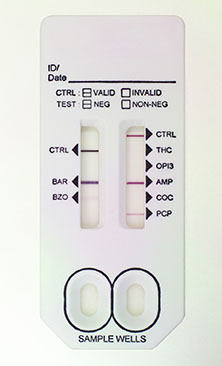 Video Courses
Video Courses Video Courses
Video Courses
In terms of drugs of abuse, urine toxicology screens will test for the presence of the five major classes of these substances; amphetamines, cannabis, cocaine, opioids and phencyclidine (PCP). You must exercise caution in the interpretation of the results of these tests as they have several limitations. Importantly,
1) A positive test does not necessarily equate to acute ingestion. Many of these tests remain positive for days or even weeks after ingestion of the substance in question. It is often difficult, therefore, to relate the timing of symptoms to the time of ingestion.
2) A positive test does not necessarily equate to cause of disease. Ingestion of drugs may be incidental to the clinical presentation. So, for example, a person may present with chest pain and a positive urine test for cocaine ingestion. We cannot assume that the chest pain is due to cocaine, it is just one possibility and we must consider all other possibilities pertinent to the case.
3) Some commonly used medicinal drugs may result in false positive results on a urine tox screen. This is particularly true for the detection of the marijuana breakdown product THC. It also makes the interpretation of a positive result for amphetamines difficult. Many legal drugs can produce a false positive for the latter agents. The best way of approaching this problem is by making a detailed record of medicinal drug use (taking a detailed drug history) and, if the result is of critical importance, cross reference the medicinal drugs with the test result to see if there are reports of false positives. Urine toxicology must be interpreted in the context of a detailed drug history.

4) False negative results are not uncommon. The tests are not foolproof in detecting some drugs of abuse. If intake of a specific agent is strongly suspected and important to establish, chromatographic tests may be requested for that specific agent (specific drugs). An example of the later would include ingestion of MDMA. This compound is poorly detected on urine testing but will be picked up by chromatographic analysis.
5) These tests cannot distinguish between use of legal versus illegal opioids, for example codeine versus heroin. Both are detected by the presence of opioid metabolites in the urine.
DisclaimerPrivacy PolicyTerms of UseData Deletion© Acadoodle 2025